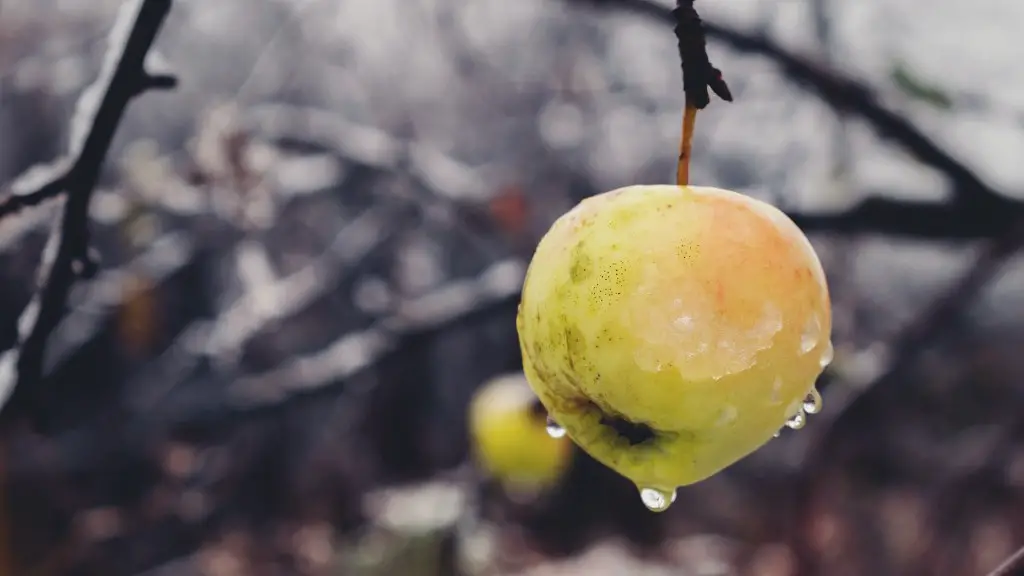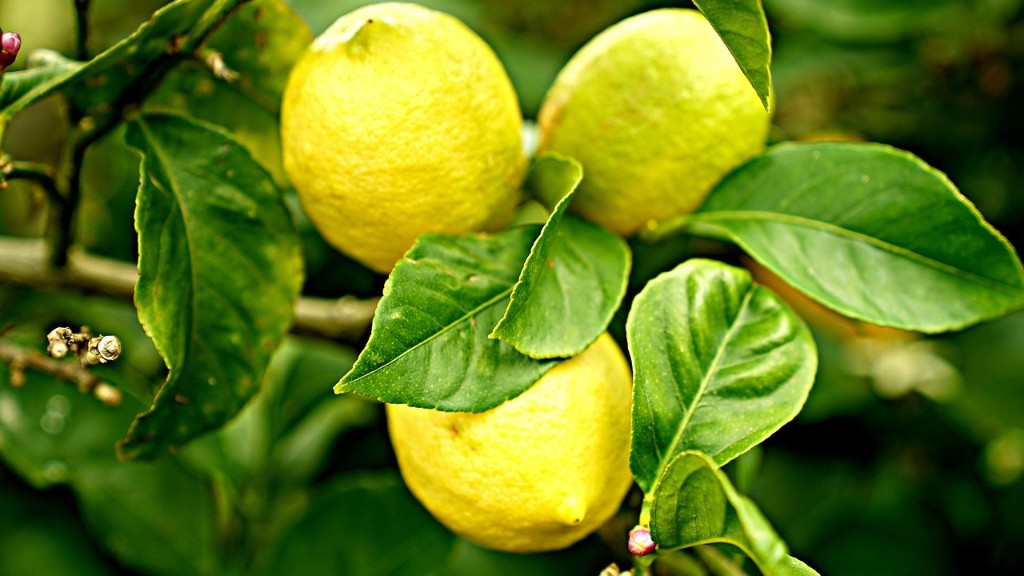Determining when an Avocado Tree will Bear Fruit
Avocados are a very popular type of fruit. Harvesting them from an avocado tree is often seen as a cost-effective and rewarding solution for those who enjoy eating and using them. But when does an avocado tree bear fruit? This question can be answered in several different ways, as the time that it takes for an avocado tree to flower and bear fruit depends upon a few different factors.
The most important factor when determining when an avocado tree will bear fruit is the type of avocado tree that is being grown. The time it takes to bear fruit ranges from 3 to 8 years. Certain varieties, such as the Hass, may take as little as 3 years before they are ready to bear fruit, while others such as the Wurtz, may take up to 8 years.
Another factor that plays an important role in determining when an avocado tree will bear fruit is the growth conditions. If the tree is planted in an ideal location, with optimal soil and temperature conditions, then it may bear fruit faster. Other conditions, such as the amount of sunlight and water, will also affect when the tree will bear fruit. The amount of fertilizer used can also help to speed up the process.
Avocado trees can also take longer to bear fruit if they are not pruned properly. Pruning helps to ensure that the tree has healthy branches and can promote the development of fruit. An improperly pruned tree may not produce fruit until much later because the fruit will not be able to develop properly.
The final factor that determines when an avocado tree will bear fruit is simply luck. No matter what factors are taken into consideration and no matter how carefully the tree is cared for, there are often unpredictable factors that can delay or speed the production of fruit. Unusually wet or dry summers, for instance, can affect the timeline.
Extending the Growing Season
The growing season is another factor to consider when determining when an avocado tree will bear fruit. The season typically begins in the spring and ends in the summer, with the ripening of the fruit happening sometime in between. Depending on the weather, the growing season can be slightly extended or shortened, affecting when the tree will bear fruit.
However, there are some methods that can be used to try and extend the growing season. For instance, the use of a wind break or other protective structure can help to protect the tree from the elements and can extend the growing season. During particularly cold or dry times, the use of plastic sheeting may be necessary to protect the tree from the elements.
There are also irrigation techniques that can be used to extend the growing season. By providing the tree with water from an irrigation system, the tree can be kept hydrated and may be able to bear fruit for a longer period of time. This can be especially beneficial in areas that experience long periods of drought.
Finally, it is also possible to protect the tree from frost and extreme temperatures by using a plastic shield or an appropriate kind of fabric. These protective measures can be very helpful in keeping the tree safe and ensuring that it will be able to bear fruit over an extended period of time.
Fertilizing and Maintenance
Fertilizing and maintenance are also important components of ensuring that an avocado tree will bear fruit. Fertilizers can help to ensure that the soil around the tree is rich and full of nutrients. This is especially important for hilly terrain where the soil can be less nutrient-rich.
Proper maintenance is also essential for ensuring that an avocado tree will bear fruit. The tree should be monitored regularly to ensure that it is healthy. The branches should be trimmed regularly to keep them from becoming too overgrown, and any pests should be promptly taken care of to ensure the tree’s health.
The tree should also be regularly watered and any dead or damaged branches should be pruned away. Proper pruning will ensure that the tree will be able to produce healthy fruit and will also ensure that the tree does not become overgrown and unproductive.
Finally, mulching can also be used to improve the health of the soil around the tree and should be done once or twice a year. Mulching is an effective way to maintain the health of the soil, while also providing nutrients to the tree itself.
Harvesting
When the avocado tree has finally started to bear fruit, it is time to begin the process of harvesting them. The process of harvesting an avocado tree is relatively straightforward and should be done when the fruit is mature and has reached its peak flavor. The best way to tell if the fruit is ripe is by gently pressing the fruit with the thumb; if it gives slightly, it is ready to be picked.
Fruit should also be harvested when it has achieved its desired size and shape. If the fruit is too small or misshapen, it is best to wait for the next harvest. Fruit can be harvested with a small ladder and by wearing protective gloves. Fallen fruit should also be collected from the ground to prevent the spread of any harmful pests or diseases.
Once the fruit is harvested, it can be stored in airtight containers or frozen until it is ready to be used. It is important to keep the fruit refrigerated or frozen to keep them fresh. The harvested fruit should also be consumed as quickly as possible to ensure that they remain as fresh and flavorful as possible.
Final Considerations
When attempting to determine when an avocado tree will bear fruit, there are many factors to consider. Depending on the variety and the growth conditions, it can take anywhere from 3 to 8 years before the tree will bear fruit. Taking the necessary steps to extend the growing season, such as using appropriate fertilizers and protective barriers, can help to speed up the process.
When the tree finally starts to bear fruit, the process of harvesting and consuming should be handled carefully. The fruit should be harvested when it is ripe and then stored and eaten as soon as possible. Following these guidelines can help to ensure that the avocado tree will produce delicious and nutritious fruit for many years to come.
Propagation
In order to propagate an avocado tree, a grower must either use grafting or cuttings. Grafting is a process in which a piece of the chosen tree is cut and then inserted into the rootstock of a separate tree. Once the new tree begins to grow, the old tree can be removed. Grafting is often most successful when the two trees have similar characteristics.
Cuttings are also an effective method of propagation. During this process, short pieces of the parent tree are cut and planted in soil. These pieces should be at least three inches long and taken from the primary fruiting branches. Cuttings should be planted at an angle so that the cut end of the branch is exposed to the sun. They should then be kept moist and given plenty of water and fertilizer.
When a tree is propagated, it will typically take at least three years before it begins to bear fruit. This means that the process of propagating an avocado tree is a lengthy one, but in the end, it can be very rewarding. With a little bit of patience, it is possible to create a new avocado tree that will provide a bountiful harvest.
Pests and Diseases
Pests and diseases can have a detrimental effect on an avocado tree and can reduce or even prevent the tree from bearing fruit. Common pests include aphids, mites and scale insects, which can be controlled with insecticides or organic controls. Other pests, such as fungus gnats, can be harder to control and may require different treatments.
There are also a variety of diseases that can affect an avocado tree and cause it to stop producing fruit. Common diseases that can affect avocados are root rot and anthracnose. These diseases can cause the leaves and fruit to become discolored and can prevent the tree from producing fruit. It is important to monitor the tree closely and take the necessary steps to prevent and treat these diseases.
Finally, it is also important to keep an eye out for any signs of damage that may have been caused by animals, such as squirrels or other rodents. These pests can not only damage the flowers and fruit of the tree but can also damage the bark of the tree, potentially resulting in further damage.
Organic alternatives
Organic alternatives can be used to help an avocado tree bear fruit in an environmentally friendly way. Organic methods such as using compost or mulch can help to improve the soil around the tree and provide necessary nutrients, while organic pesticides can help to control pests and diseases.
Organic fertilizers can also help to ensure that the tree has enough nutrients to thrive and to bear fruit. Organic fertilizers are available in both liquid and granular forms and can be used to supplement the soil around the tree. Organic methods of fertilization can also help to protect the environment from harmful chemicals.
Finally, it is also important to use organic treatments for any pests or diseases that might be present. Organic treatments are often more effective than conventional treatments and will also be much less harmful to the environment. Organic treatments should be used whenever possible to help ensure that the tree is healthy and will produce a plentiful harvest.




